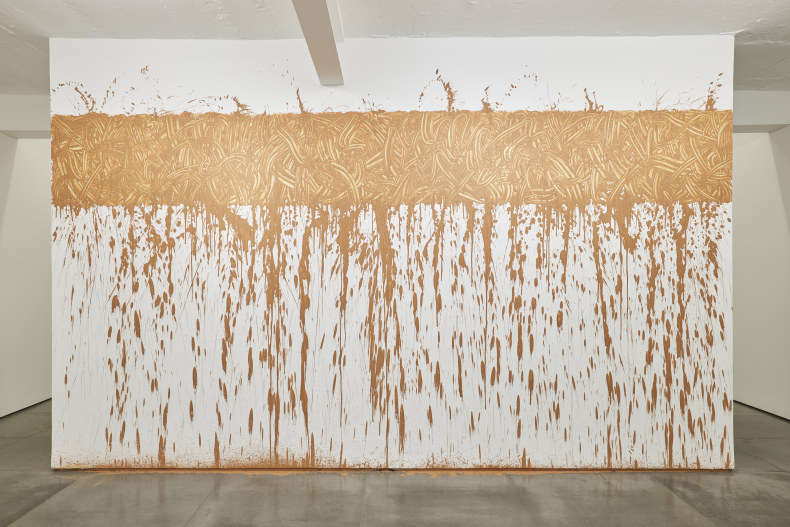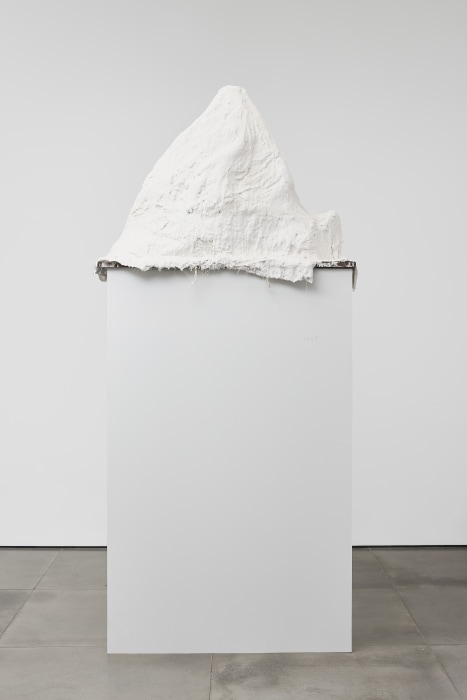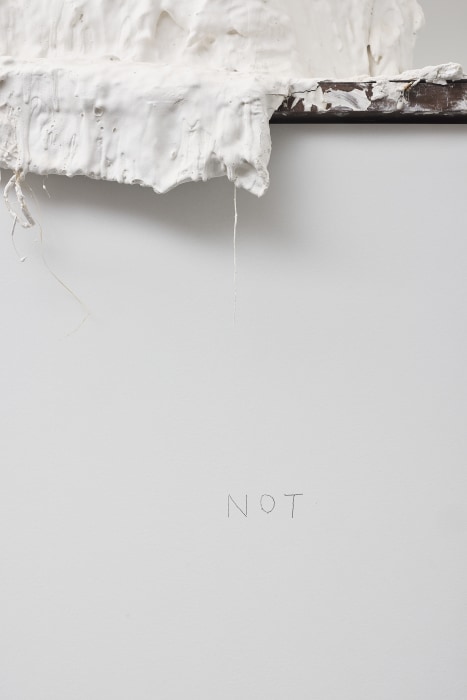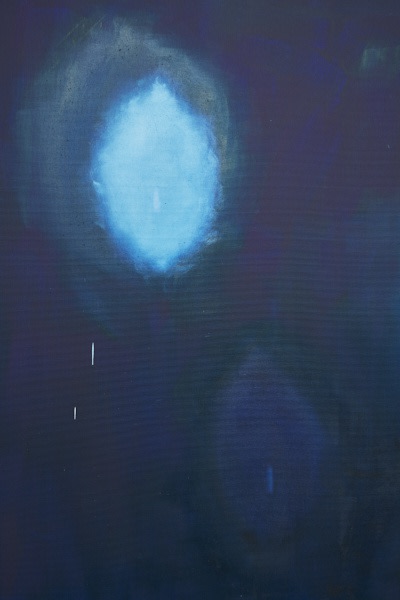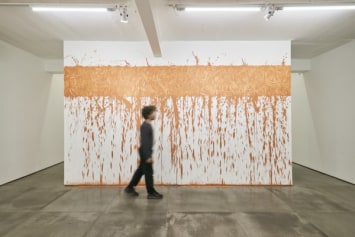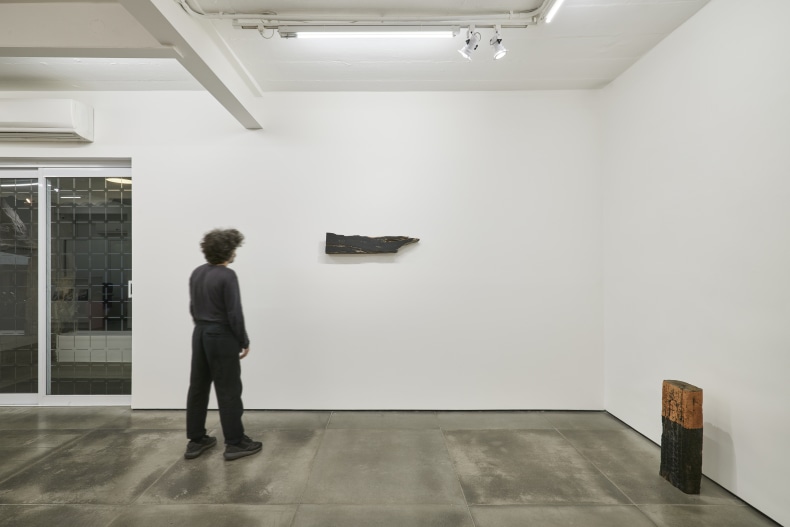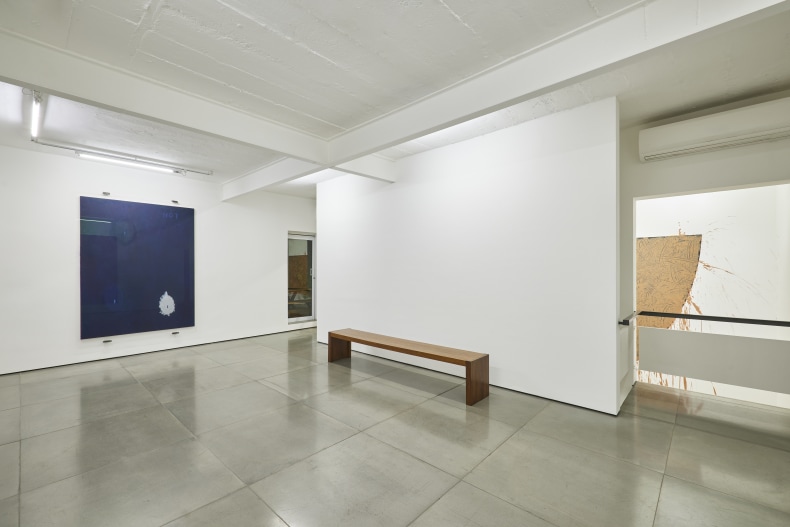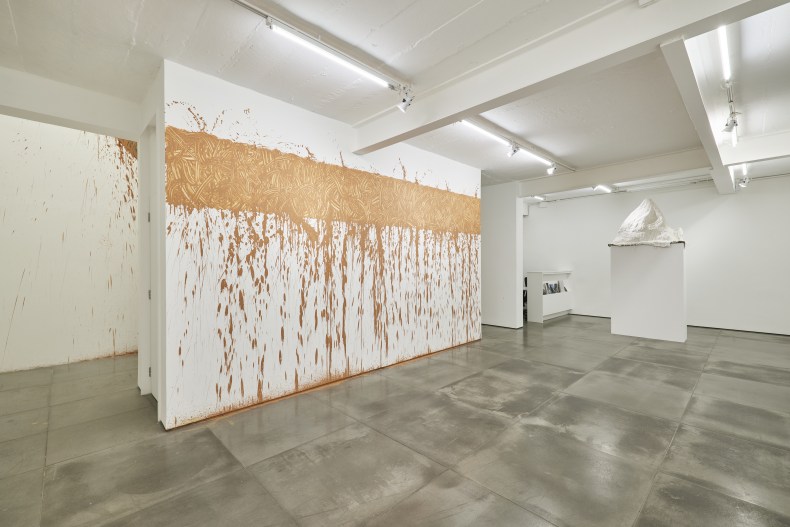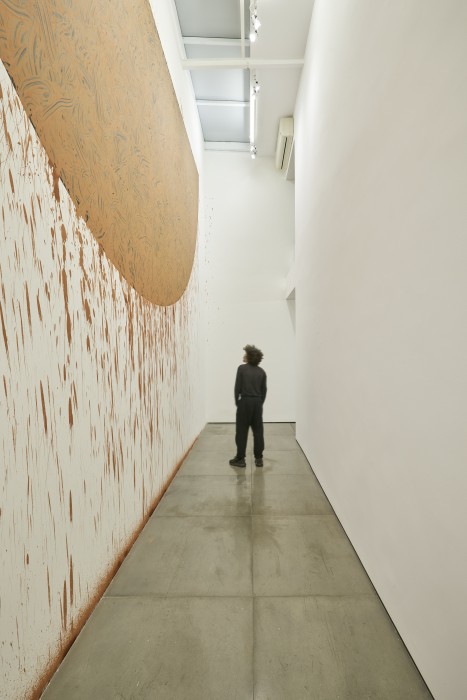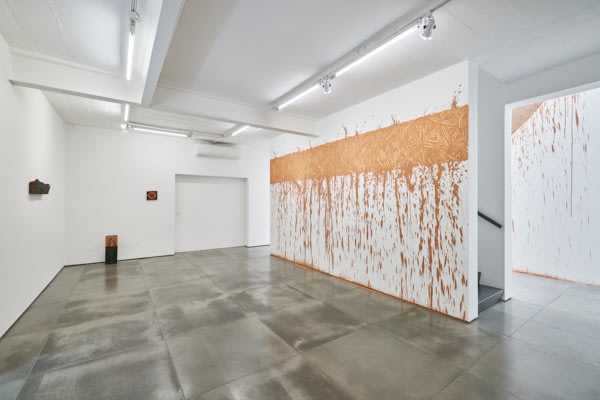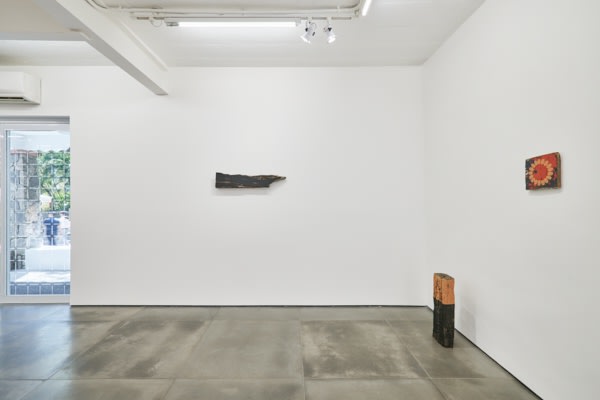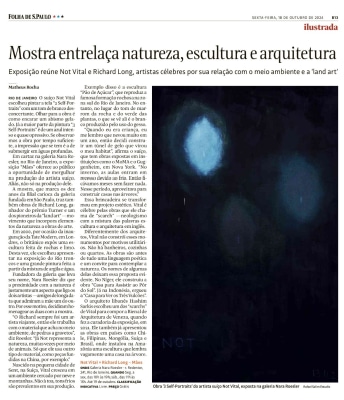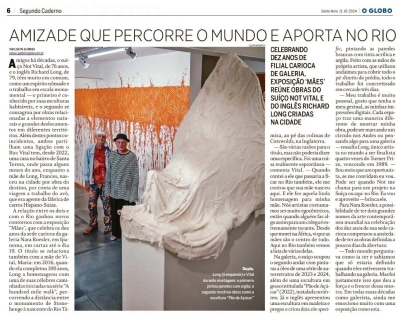Nara Roesler Rio de Janeiro is pleased to present Mothers, an exhibition that brings together works by Not Vital (Sent, Switzerland, 1948) and Richard Long (Bristol, UK, 1945). The show, which opens to the public on September 10, celebrates the tenth anniversary of the gallery in Rio and will feature new works by both artists, including site-specific works by Richard Long created especially for the occasion.
Despite their different artistic and personal paths, Long and Vital share a friendship and a bond that transcends the field of art. The title chosen by the artists for the exhibition is a tribute to their mothers. Richard Long's mother, Frances, from Bristol, England, was born in Rio de Janeiro. Long, in turn, established a relationship of admiration and affection with Maria, Not Vital's mother. On Maria's 100th birthday in 2016, Long dedicated a new edition of his famous series, begun in 1971, entitled 'A Hundred Mile Walk' - in which he covered the distance between Stonehenge and the source of the Thames - to her.
Born in Sent, Switzerland, Not Vital grew up in a landscape marked by snow and shades of gray, a color palette that strongly influences his production, since, in his words, “when it wasn't snowing, everything was gray”. Although he also produces installations and paintings, the most expressive part of his poetics is made up of sculptures, a language to which he has dedicated himself since the beginning of his career and in which he uses materials such as bronze, plaster, and marble, among others. In many of these works, the artist explores the link between the organic and inorganic, human and animal, real and fantastic, in totemic, hybrid, and mysterious structures.
Not Vital is also known for having expanded sculpture into architecture with his Scarchs, a term created by the artist himself, combining the words “sculpture” and “architecture” to define works built using local materials in a site-specific environment worldwide. The artist travels the globe making works and interventions, having already visited places like China, Niger, the Philippines, and, more recently, Brazil, where he has a studio in the Santa Teresa district of Rio de Janeiro.
Richard Long, on the other hand, is one of the most celebrated contemporary sculptors, having been the only artist to be a Turner Prize finalist four times (and winner of the 1989 edition). With a career that began in the 1960s, the artist characterizes his work as a “response to the environments” he walks through. In general, Long makes some kind of alteration to these landscapes, almost always with the materials that make them up, such as stones, mud, and snow. In some cases, the main element becomes the artist's walk through the area, with photographs, maps, and texts serving as a record of this action.
As his works often take place in isolated and remote areas, such as the Sahara desert or lands in Iceland, and since most of these sculptural actions are ephemeral, the process of executing his gestures on the ground, as well as the photographic record of them, bring his production closer to performance, of conceptual art and establish a dialog with Land Art.
As two artists who think about sculpture from a contemporary perspective, it is possible to draw interesting parallels between their poetics. In addition to the nomadic spirit they have in common which somehow marks the work of both artists, we can also highlight the ephemerality present in both Long's work and some of Vital's Scarchs. There is also the establishment of a relationship between the works and the environment and landscape in which they are located and, in the case of Not Vital, there are also the relationships established with the local population.



